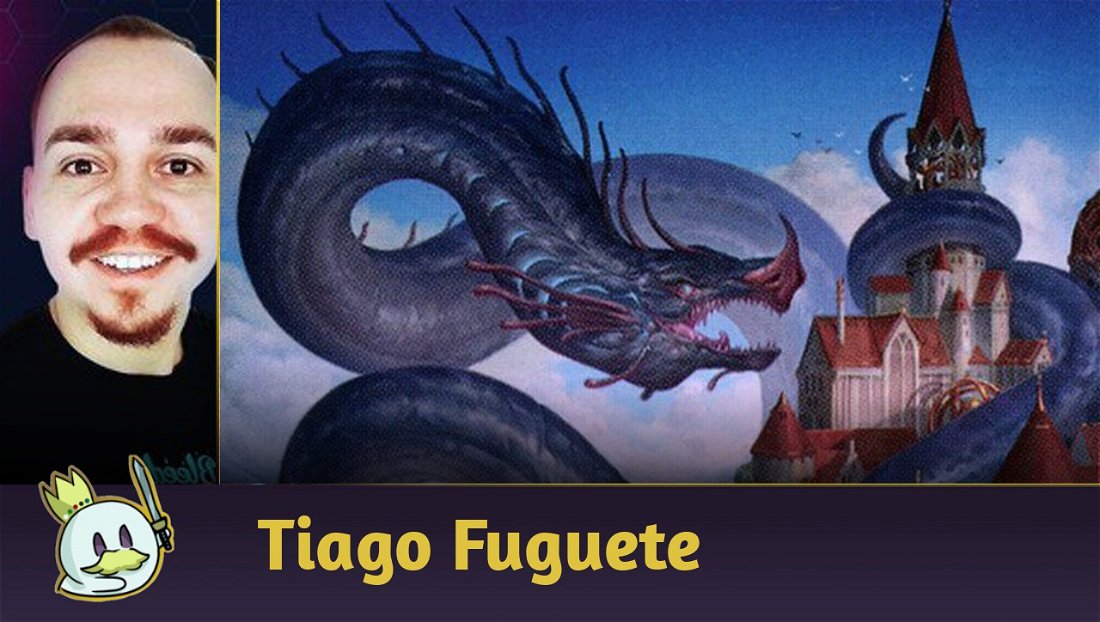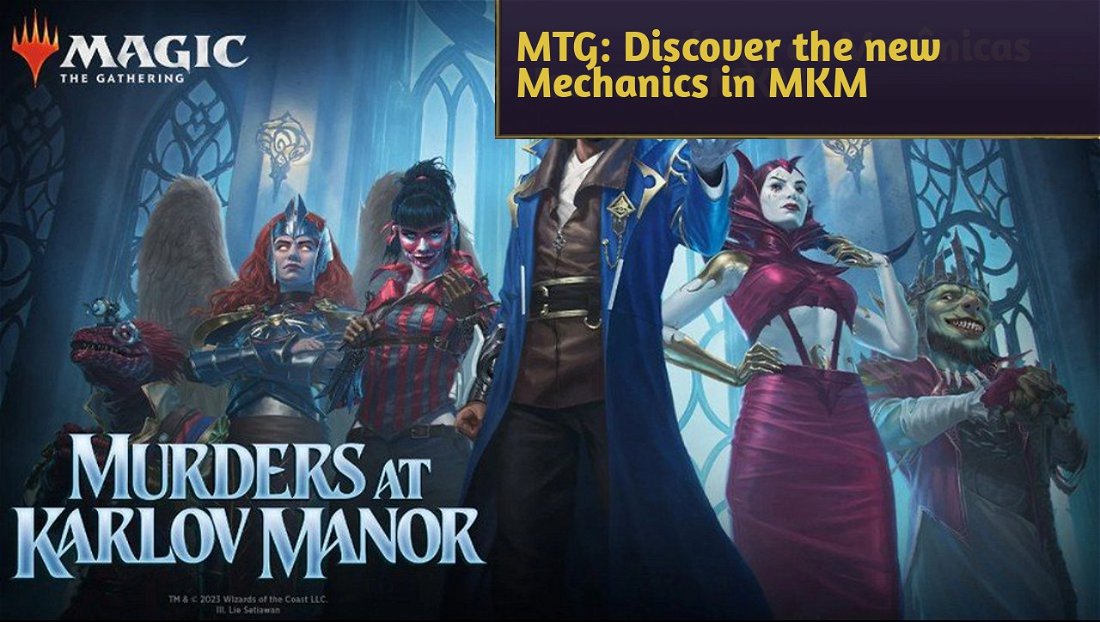A new year begins for Magic: The Gathering!
With a new cycle, countless possibilities arise with future expansions who will launch during 2024, in addition to the various innovations that players can find and popularize in major tournaments. For others, this may also be the time to try new formats - and in this case, how about starting with one of the most famous and loved in tabletop environments, Modern?
Modern is an eternal format where all cards released up to the Eighth Edition are legal for competitive games, with a vast banlist since its conception in 2011. Since then, it has undergone two major changes in its environment due to the direct insertion of high-power cards in the Modern Horizons and Modern Horizons II sets with the third expansion of the cycle, Modern Horizons III, scheduled for the second quarter of 2024.
In this article, we present five competitive deck options to get started in the format this year!
Five Decks to play Modern in 2024
This list presents five reliable archetypes, with good learning curves and good results in competitive events.
However, there is no way to predict yet the impact that Modern Horizons III may have on the competitive environment given the long history of its predecessors, and while we seek to choose “safe” investment options, we cannot guarantee that they will remain in their respective positions in the Metagame after the launch of this long-awaited and feared set.
Rakdos Midrange
Rakdos Midrange, or Rakdos Evoke, remained at the top of Modern even after the intervention that removed Fury from it and made it less explosive. Its core of efficient threats and favorable trades make it the most played and reliable archetype, with some of the best results in Modern events.

Rakdos has one of the most efficient creature packages in the format, with Ragavan, Nimble Pilferer to guarantee pressure and card advantage very early, Orcish Bowmasters as an efficient answer against small creatures and a punishing permanent against famous draw effects - putting Modern's former best deck, Izzet Murktide, in check - and Dauthi Voidwalker as a graveyard hate with an efficient body, evasion and the possibility of extracting value from the opponent's cards.

Its other side is made up of the package known as Scam, which consists of using Grief's evoke ability to remove a key card from the opponent's hand and then respond to its trigger with Not Dead After All or Undying Evil, returning Grief to the battlefield and taking away another important resource.
This is Rakdos's main unfair play, capable of making an opponent start a game without the two best cards in their hand and delaying them while Grief establishes a five-turn clock.

The threat package is complemented by the combination of Sheoldred, the Apocalypse and Fable of the Mirror-Breaker, two of the best cards released in Standard in the last two years, and whose interaction with each other guarantees an excellent breather against Aggro and Midrange, in addition to Reflections of Kiki-Jiki being a lethal combination alongside Grief or Orcish Bowmasters.

The rest of the list is made up of some of the format's best removals, as well as some flexible slots to accommodate the best options for each Metagame.
The great advantage of Rakdos is precisely its mix of high-power cards, unfair openings and flexibility to adapt to the most varied matchups, meaning it has many balanced games and few one-sided, whether good or bad. It is a solid option for most tournaments, and the player's experience makes a lot of difference when competing for a Top 8 spot or in an RCQ.
Temur Rhinos
Temur Rhinos or Temur Footfalls is a Midrange-Combo focused on the interaction between Cascade and spells with no mana cost.

In it, these spells are added together to bring Crashing Footfalls, which will put eight power onto the board divided into two 4/4 tokens with Trample, capable of winning non-interactive games quickly. But Temur Rhinos can play well even without its main combo thanks to its super efficient interactions and complementary threats.

Without Fury, this deck now resorts to Subtlety as the main free interaction to maintain Tempo, while the elemental does a good job as a complementary threat. In the same vein, Tishana’s Tidebinder has become a staple due to its almost endless number of interactions with other permanents and abilities in the format, in addition to having an aggressive enough body for attrition matchups.
Finally, Murktide Regent operates here as a mid-game bomb, sometimes putting seven or even eight power with evasion on the battlefield.

To start the game, Temur Rhinos runs cards that bypass Cascade's mana values, such as Fire // Ice, in addition to resorting to other free spells or card advantage engines such as Flame of Anor, extremely flexible on its own and whose potential has been optimized with Tishana's Tidebinder.
Temur Rhinos stands out as an efficient combo against a dozen matchups, but it also establishes an excellent attrition plan when necessary, making it flexible and capable of finding a way out for different archetypes in the Modern Metagame.
Tron
One of the oldest decks in the format, Tron uses Urza's land package to cast bombs as early as the third turn.

Once together, this land cycle generates a total of seven mana - the perfect cost combination for casting some of Modern's most powerful colorless cards:

As the match goes on, the number of bombs on Tron's battlefield only increases, making it impossible for the opponent to continue in the match or keep up with the amount of value and board pressure established with this unfair mana math.
Among them, Karn, the Great Creator stands out, whose ability allows a “toolbox” strategy, where you can use Sideboard cards to respond to different situations in each matchup.

To reach this plan, Tron has a huge package of tutors and redundancy to close the trio and find their payoffs, with Expedition Map, Sylvan Scrying and Ancient Stirrings, staples since its conception.

It also has a decent interaction package, which received excellent support with the core card of the Lord of the Rings set, The One Ring, whose abilities offer draws and an extra pseudo-turn, essential for Big Mana archetypes.

Having been at the forefront of the format for years, Tron is one of the most efficient proposals in the Metagame and one of the best archetypes for those who want to enter this format.
Its strategy, while having different means of interacting, consists of ignoring what the opponent does and guaranteeing inevitability the moment cards like Ugin, the Spirit Dragon or Ulamog, the Ceaseless Hunger enters in play, so reaching the count of 1+1+1 = 7 is essential, and the first turns are almost always dedicated to this.
Tron is also known for having one of the best topdecks in the format and being one of the least punishable strategies against steal effects, such as Ragavan, Nimble Pilferer and Dauthi Voidwalker.
Hammer Time
Hammer Time is one of those archetypes that seems simple to pilot, but requires extensive knowledge of the deck, the Metagame and the various micro-decisions that must be made each turn to get the most out of it.

In essence, Hammer Time is a combo that consists of using Puresteel Paladin and Sigarda's Aid to bypass the equip cost on Colossus Hammer to deal lethal damage to the opponent in up to two turns with any creature, with Ornithopter, Gingerbrute or Inkmoth Nexus as favorite targets, which manages to win the game on-spot once the hammer equipped.

It is also composed of two other attack fronts: one involves Stoneforge Mystic, which, in addition to serving as a tutor for Colossus Hammer, can seek out Kaldra Compleat and use its ability to circumvent its mana cost and put it straight into play, leaving a 5/5 with indestructible and keyword soup for the opponent to deal with.

The other approach involves a “go wide” plan with the format’s other and most recent artifact tutor, Urza’s Saga. In addition to searching for Colossus Hammer and allowing a toolbox with Gingerbrute and Shadowspear, the enchantment land has an ability that creates artifact tokens, naturally large in a deck whose core is mostly composed of them, allowing Hammer Time to have more impactful threats on the battlefield.

With so many different approaches, Hammer's package of interactions and complements is very variable and depends on what each player expects from the Metagame: playing Mono White or Azorius can make a lot of difference and the protection package basically dictates which games will be good or bad.

As it is a more susceptible to some of the format's main removals, Hammer Time requires a lot of training and study of the Metagame, the deck and the advantages and disadvantages of each variant to decide which list is most appropriate for each event, despite its proposal making it one of the fastest strategies in the format on non-interactive games.
Burn
Even older than the format itself, Burn is an Aggro aimed at low-cost creatures and efficient damage spells. Interestingly, it is also one of the decks least affected by power creep in Modern Horizons sets, after all, it already has most of the best cards released in their respective categories so far and its game plan is objective enough to give too little care about value cards, like Ragavan, Nimble Pilferer.

Instead, Burn only cares about speed. In this regard, Monastery Swiftspear and Goblin Guide are still the two best one-mana red creatures ever released to pressure the opponent, even when a 2/2 for one mana hasn't been impressive for years now.

To complement this clock, Burn relies on some of the most efficient direct damage effects in the game - except for Fireblast and Chain Lightning - to reduce the number of remaining turns for the opponent, and they wonderfully with Monastery Swiftspear, which adds “one more” damage for each spell cast.

Burn also has one of the most objective Sideboards in the format, without as many options for one-ofs or effects that work in a specific condition, as its game plan involves not letting the game go on for too long.
Furthermore, it is also one of the most affordable decks in the format, costing less than half as much as some of the other top Tiers in the format.
Conclusion
While previews for Murder at Karlov Manor begin next week, the big news for Modern will certainly arrive in the second quarter of 2024, with Modern Horizons III.
In its latest expansion, the Modern Horizons series changed the entire competitive Metagame and created an environment where acquiring MH2 cards became mandatory to keep up with the format.
The fear that MH3 will have the same effect is real. However, despite becoming the second best-selling set of the game, the public perception that it “forced” a rotation in eternal formats may make the card curation in it a little less expressive than in its predecessors - Or, in the worst-case scenario, power creep will devastate the Modern and Legacy Metagame once again.
Thanks for reading!













— Comments 0
, Reactions 1
Be the first to comment